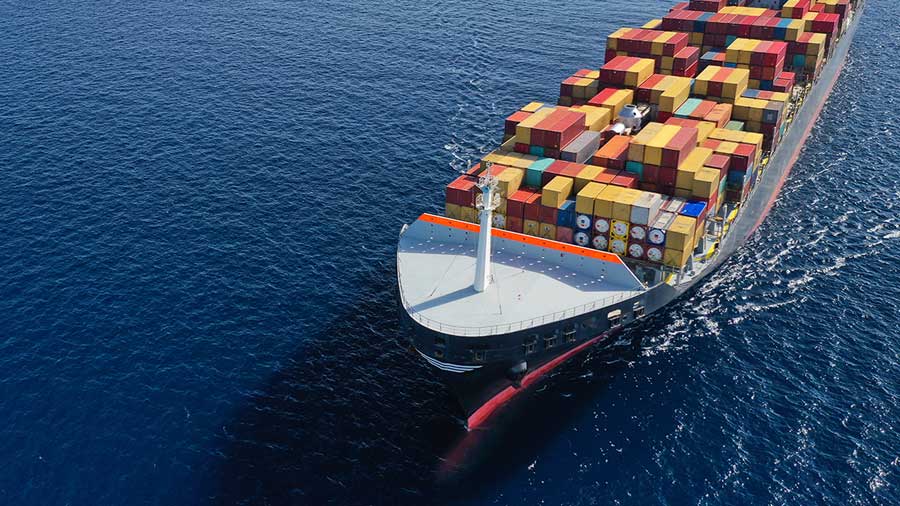Foreign investors should note the key sectors where growth is expected to rise in Indonesia for 2023.
Here are the top sectors to watch for, including downstream mining, healthcare, and infrastructure.
Indonesia’s central bank, Bank Indonesia, predicts that the country’s economy is expected to grow at between 4.5-5.3 percent in 2023 – one of the highest among G20 members – and will be supported by several important sectors, including commodities, infrastructure development, tourism, and manufacturing of high-value products, such as electric vehicle batteries.
GDP had accelerated to 5.31 percent in 2022, bringing Southeast Asia’s largest economy back to pre-pandemic growth. The pace of growth in 2022 was largely supported by Indonesia’s large domestic consumption and further bolstered by the export of commodities as global prices of key shipments, such as coal, palm oil, and iron, rallied upwards.
As such, Indonesia saw a breakthrough year in 2022 and recorded some US$43 billion in FDI, the highest in the country's history.
The highest priority for the Indonesian government for 2023 will be to hold inflation at three percent. Further, weakening global economic activity and a slowdown in commodity prices could impact GDP this year. However, external demand for commodities and pent-up domestic consumption will continue to be the backbone of growth in 2023.
Downstream mining
As Southeast Asia’s largest economy, Indonesia has enjoyed an exports boom on the back of rising commodity prices caused by the Russian-Ukraine conflict. As such, Indonesia’s commodity exports will continue to be a backbone to the economy in 2023.
In 2014, the Indonesia government began banning the export of raw mineral ores to encourage foreign investments in the downstream mining sector and development of local smelters besides boosting exports of higher-value processed commodities as well as increasing government revenue. For 2023, the country is set to expand the raw mineral export ban to include bauxite.
Indonesia has a large and unprospected variety of mineral deposits and is the world’s biggest exporter of tin, palm oil, and thermal coal, as well as a major exporter of nickel, copper, bauxite, rubber, manganese, zinc, and lead, among other resources. Mining roughly accounts for over one-tenth of Indonesia’s GDP and has been integral to its economic growth.
The country is also home to the Grasberg mine – one of the biggest gold mines, and third-largest copper mine in the world – which is estimated to have 275 billion ounces of copper and 14.2 million troy ounces of gold reserves.
Nickel
Indonesia announced a ban on the export of nickel ores in 2019 and introduced a requirement for nickel miners to process or purify raw nickel in Indonesia before export. The country is home to the world’s largest nickel reserves and its ban caused major shifts in the supply chains of electric vehicle makers and stainless-steel producers. Nickel is a major component of EV batteries and of stainless-steel.
Indonesia’s exports of processed nickel have soared from US$1 billion in 2015 to US$30 billion in 2022 with the country expected to account for half the global production increase in nickel up to 2025.
The ban on nickel ores prompted the European Union to launch a complaint to the World Trade Organization (WTO) in 2019 who argued that Indonesia’s ban was unfairly harming the EU’s stainless-steel industry. In November 2022, the WTO ruled in favor of the EU, citing that Jakarta’s ban was not in line with global trade rules. Indonesia has appealed the ruling.
The WTO ruling poses a direct challenge to Indonesia’s desire to ensure its mineral raw materials are processed domestically. The government has not announced its next strategy if it loses the appeal, but has not ruled out implementing a heavy tax on nickel raw exports as one initiative.
Electric vehicle batteries supply chain
Indonesia’s nickel reserves are making the country indispensable to the global EV industry with the country aiming to be a global EV hub. Global EV makers, which include US’s Tesla and China’s BYD, are said to be finalizing deals to invest in Indonesia, according to the country’s Coordinating Minister for Maritime Affairs and Investment, Luhut Binsar Pandjaitan. Indonesia aims to be one of the top three producers of EV batteries in the world by 2027.
Moreover, to complement its nickel-based battery industry, the country is also developing lithium refineries and anode material production facilities.
With its 278 million population, Indonesia also presents opportunities for the sale of EV vehicles ranging from motorbikes to cars. Formidable challenges and opportunities for investors include consumer affordability and the lack of public charging infrastructure. The government has an ambitious target of having 2.5 million EV users by 2025.
Coal
Indonesia is the world’s third-largest exporter of coal after China and India and the world’s biggest thermal coal exporter. Indonesia produced 687 million tons of coal in 2022 of which 494 million tons was exported and the remainder for domestic use. Coal exports earn the country roughly US$3 billion per month with China, India, South Korea, and Japan accounting for 70 percent of exports. Vietnam and the Philippines are growing export markets for Indonesian coal.
The government left the thermal coal market in a volatile state in January 2022 when it issued an export ban to meet domestic demand. The ban displaced an estimated four percent of the global seaborne supply or 36 million tons of coal.
For 2023, the country is targeting a record 518 million tons of exports and production at 695 million tons.
As with other commodities, the government is eager to develop Indonesia’s downstream coal industry, specifically surrounding the below seven subsectors:
- Coal liquefaction;
- Coal quality enhancement;
- Coal gasification;
- Coke manufacturing;
- Underground coal gasification;
- Briquette manufacturing;
- Coal-water mixture production.
This strategy will need immense foreign investment, particularly in infrastructure and technology.
Infrastructure
Infrastructure development has been the cornerstone of President Joko Widodo’s government for most of the past decade. During eight years of his tenure, his government has built 1,700km of highway, over 4,000km of non-highway roads, 30 reservoirs, 18 ports, and 21 airports, with most developed outside the island of Java. To take this into perspective, Indonesia had only 780km of highway for the past 40 years.
Between 2019 and 2024, Indonesia requires over US$400 billion for infrastructure investments. Specifically for 2023, the government has set aside US$25 billion in the national budget for infrastructure.
As such, Indonesia is pushing for private involvement in its infrastructure development through private-public partnership (PPP) initiatives. There are also opportunities for small and large-scale energy and infrastructure projects in Indonesia’s eastern regions, which is lacking the most in connectivity and is seeing increased focused from the government (Java currently constitutes 60 percent of total GDP and 60 percent of the population).
Healthcare and pharmaceuticals
Given its large market size, Indonesia’s healthcare sector presents a lucrative opportunity for foreign investors.
The government’s annual spending on healthcare has skyrocketed since the implementation of the universal healthcare program (BPJS) in 2014, which has now grown to be the world’s largest, covering some 240 million people. Every citizen and expatriate are mandated to join, and companies must register their employees to the program, paying a percentage of the premiums.
Increasing spending on healthcare will impact important sub-sectors, such as the medical devices industry, which was valued at US$4.5 billion in 2019. The majority of this, US$2.8 billion, was from imports. Indonesia mainly imports sophisticated medical instruments, such as PET-CT scanners and ICU equipment, and exports low-tech equipment, such as gloves and syringes.
The pharmaceutical industry is dominated by generic drugs (70 percent) with the remainder from over the counter (OTC) drugs. The BPJS program has boosted sales of generic drugs in the country, valued at more than US$700 million.
Tourism
Indonesia has set an ambitious target of up to 7.4 million tourists for 2023, generating some US$5 billion for the country. This is still not at the pre-pandemic levels of 16 million foreign visitors.
However, the sector will have its challenges in 2023.
Despite all countries lifting their COVID-19 travel policies, the threat of a global recession, high air fares, and inflation are impacting consumer spending behavior.
The country’s tourism ministry has opened the sector to foreign investment for developing sustainable-based tourism projects, five priority tourist destinations, and eight special economic zones catered to tourism. The ministry also highlighted that these opportunities were valued at US$1.5 billion in total and would create 1.5 million new jobs.








